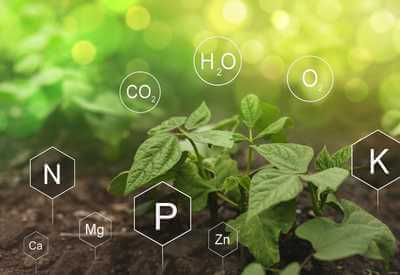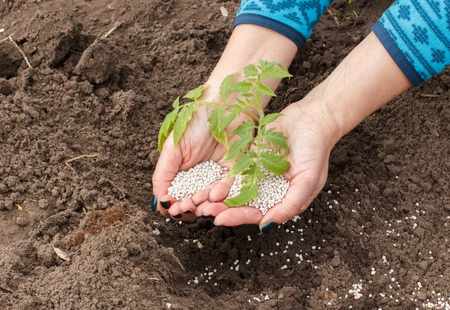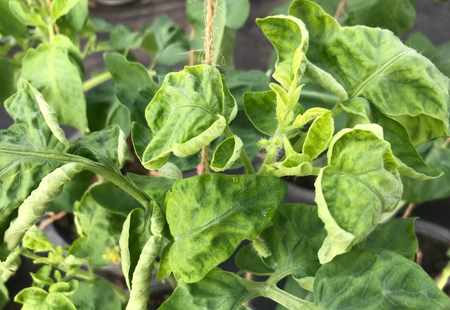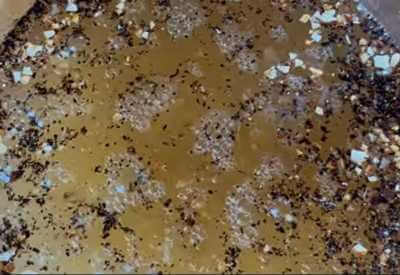When I’m up to the task to grow any kind of tomato, I’m more likely to stay with my homemade liquid tomato fertilizers in the past few years.
Because I could experience several significant benefits by using them.
Here are some homemade liquid fertilizers for tomatoes.
- Weed liquid
- Tea and coffee ground liquid
- Vegetable scraps liquid
- Compost tea fertilizer
- Banana peels liquid fertilizer
- Seaweed liquid fertilizer
- Epsom salt
- Eggshells liquid fertilizer
Each one of the above liquid fertilizers are working on the tomato plants in different ways according to the nutrient content they have. So I want you to stay with me till the end, cause the 6th one can do wonders!
Table of Contents
Why use liquid fertilizer for tomatoes?
Do you know what’s the reason I push you to use homemade liquid fertilizers for tomatoes?
As tomato plants are living only for 5 to 6 months, we don’t need to fertilize them that very often.
But whenever you fertilize, using something that’s easy to be absorbed and easy to apply can have a lot of positivity.
Here’s why you need to use liquid fertilizers on tomato plants.
1. Easy to apply

Unlike using dry fertilizers, liquids made it so easy to apply. All you need to do is just pour the liquid fertilizer around the plant by keeping some distance from the stem.
And what you shouldn’t do is just pour it onto the base of the stem. It may burn the roots and inhibit the nutrition intake.
Also when you use your homemade liquid fertilizers for tomatoes, you don’t require to do watering before and after fertilizing.
2. Uniform application
When we use dry fertilizers, we don’t exactly know whether every part of the roots has the nutrients that we feed into the soil.
But when we feed them with the liquid fertilizer, we can ensure our tomato plants are experiencing all the nutrients we fed them.
3. Quick nutrition supply

According to my personal experience, all kinds of plants are quickening the nutrient intake when we supplied it as a liquid.
Here’s the science behind it.
Roots are well developed for absorbing liquids rather than filtering nutrients from something not in liquid form. That’s why roots are capable of absorbing water quicker than fertilizers in any condition.
As tomatoes have a short living period, better if you provide their nutrients quickly.
Therefore, your own homemade liquid fertilizers can be really beneficial for tomatoes.
4. Can be used on any growing stage
The main stages you need to feed the tomato plants are when the plants getting start to grow, and when the plant is about to fruit.
The nutrients the plant requires at each stage can be different.
But, we can make our own homemade liquid fertilizers for tomato plants according to the nutrient supply they required.
And it costs nothing, and also can be prepared in no time!
Those are some benefits that you’ll have by using homemade liquid fertilizers for tomatoes.
Now let’s find out what are the general fertilizing requirements for tomato plants.
It will help you make the best-ever fertilizer for your tomato babies 🙂
Let’s dive right in!!
Fertilizing requirements for tomatoes?

Whether you heard before or not, tomatoes are heavy feeders.
It means tomato roots are absorbing more nutrients from the soil than the other plants usually do.
So, does it mean you need to fertilize tomato plants too heavily??
No man. No!!
If your soil medium is fairly rich in nutrients, you don’t have to work too much on fertilizing tomato plants.
If you feed your tomato plants for more than enough, your plants will end up being diseased by over-fertilizing issues such as leaf curls.

But if your soil is dull and has no nutrients at all, you have to work on preparing the soil before planting the tomatoes.
If the garden soil is fairly rich, experts are recommending to use of 10-10-10 NPK fertilizer for tomato plants in general.
But if your garden soil is lack of nutrients, 10-5-5 NPK fertilizer is being used for tomatoes commonly.
Now, in this case, you are making your own homemade liquid fertilizers for tomato plants. Therefore you can’t check out the exact NPK ratios.
So here’s what you want to do.
As the first step of fertilizing, you need to use Nitrogen rich liquid fertilizer for younger tomato plants to sprout out new leaves.
In the growing period of the tomato plant, you can use a balanced fertilizer.
When they arrive at their fruiting or flowering season, you need to feed the tomato plants with more Phosphorous and Potassium.
In this period of time, you can use liquid fertilizers made with banana peels, and egg shells to provide the required nutrients.
How to make homemade liquid fertilizers for tomatoes?
Now we are going to dive directly into the point. Let’s see what homemade liquid fertilizers that you can make for tomato plants.
And also I’ll explain what fertilizer to use, at what time!
1. Weed liquid fertilizer

This is my all-time favorite liquid fertilizer to start up things when growing any vegetable including tomatoes.
All you need to make this fertilizer is useless weeds, and some other grass if you like.
This one costs you nothing, but this liquid contains a massive amount of Nitrogen and micronutrients.
Just think how quickly the weeds grow even without feeding them. The fact behind that is the micronutrients they obtained from their roots.
Here’s how to make your own weed liquid fertilizer.
- Collect some weeds into a bucket, from your garden.
- Add some compost or potting mix as a layer on top. (this works as a slow release)
- Now fill up the bucket with water and stir it well.
- Then lid it up and keep it for about a week.
This weed liquid fertilizer is perfect for starting up the growth of the tomato plant.
2. Tea and coffee ground liquid fertilizer
This is one of the easiest liquid fertilizers that you can ever prepare for tomato plants.
All what you require is some tea grounds or coffee grounds.
According to plantmaid dried tea leaves consists of 4.4% Nitrogen. And coffee grounds also consist of high Nitrogen.
So making a liquid fertilizer from coffee or tea grounds can be used to boost the leaf growth of your tomato plant in the early stage.
Here’s how you make them.
- Add up the coffee or tea grounds into a bucket.
- Fill it up with water.
- Mix some compost to work as a slow-release fertilizer.
- lid it up and keep it for 3 days.
3. Vegetable scraps liquid

Just think about how much of waste you throw away from your kitchen every day.
Did you know that they can make a stunning liquid fertilizer for tomatoes in your garden?
Vegetable scraps can contain various sub-nutrients that plants required. Especially the micronutrients.
Those micronutrients are helpful to the overall growth of the plant and health of your tomato plant.
Here’s how you make them.
- Collect all of the vegetable kitchen scraps and put them halfway into a 5-gallon bucket.
- Top up the bucket with water and lid it up.
- Keep the bucket somewhere that gets enough sunlight, for a week.
Now you are all done with your vegetable scraps liquid fertilizer.
I recommend you to use this fertilizer during the growing (middle) period of the plant. It means not too early or not too late of the plant’s growth.
Also, remember that you don’t use this liquid straight away on the tomato plants.
Dilute it with some water and then use it on the plants.
4. Compost tea
Compost tea is a well-known, easy-to-make liquid fertilizer for tomato plants.
There’s no special proceeding for making compost tea.
Just put some compost halfway into a 5-gallon bucket and fill it up with water. Stir it well and keep it for 24-48 hours.
You can use this liquid straight away on your tomato or any other plant.
The reason many gardeners are likely to use compost tea over solid compost is because compost liquid is more applicable and absorbable for the plants and gives results quickly.
5. Banana peels fertilizer

Banana peels can be known as a super Potassium source that can be used in organic gardening.
And usually, banana peels can be used on any kind of plant that does flowering and fruiting.
Mainly there are 3 ways that you can use banana peels as a fertilizer for plants.
- Burying the banana peel under the plant.
- Using them on a compost pile.
- Making liquid fertilizer from banana peels.
Among the above 3 methods, the liquid fertilizer works more efficiently because of the surface area that reacts with the soil is larger than the others.
It’s a scientific fact that the more surface acts, more sooner the reactions happen.
So the microorganisms can break down the nutrition faster and make the fertilizing process resulting quicker.
And also banana peels can work as a pest repellent, which is an extra benefit we are having.
Here’s how you make banana peels liquid fertilizer.
- Find some peels of well-ripened bananas and chop them off.
- Put them into a blender and blend them well.
- Now put the blended peels into a bucket and top it off with water.
- Keep it for 2 days and you’re ready to go!
Generally, gardeners recommend using banana peel liquid fertilizer twice a week for tomato plants.
You can start fertilizing this after 3 weeks from transplanting. But I would recommend waiting at least a month or so.
Also, make sure to dilute the extract with water when using. This will help you to do both watering and fertilize the plant at once.
Usually, I’m adding 3 cups of water for one cup of extract liquid.
6. Seaweed liquid fertilizer

I beg you to use seaweed in your garden if you still do not have a try on seaweed as a fertilizer.
Because seaweeds are consists of Phosphorous, Calcium, Magnesium, Potassium, and especially growth hormones.
you can use seaweed as a liquid fertilizer for tomatoes or any other plant.
Also read: Seaweed fertilizer for succulents
The reason why you should use seaweed fertilizer in liquid form is, they are too concentrated with its nutrients, and can be used to burn the roots.
Here’s how you make them.
- Collect some seaweeds from the seashore and wash them out as all the salt content gets off.
- Now cut them into slices and put them halfway into a 5-gallon bucket.
- Top it off with water and lid it on top.
- Keep the bucket in a specific location for 2-3 weeks. You are ready to go!
You can use this seaweed liquid, diluting it with 1:10 water.
If you feel that your tomato plant doesn’t produce enough flowers upon its growth, try using some seaweed liquid on it.
It will stimulate the flowering and overall growth of the plant.
This is what seaweed fertilizer does to the plant’s growth.
Here are the visual steps for preparing your own seaweed liquid fertilizer.
7. Epsom salt
Epsom salt is something you can use in your garden, which consists of extracted magnesium sulfate.
If we break down Epsom salt, they are packed with Magnesium and sulfate.
Both of these constituents are playing some crucial roles when we consider growing tomato plants.
Magnesium speeds up the seed germination process, strengthening the plant cells, and also helps the plants to absorb more Nitrogen and Phosphorous.
It will prevent Magnesium deficiency in tomato plants which leads the leaves to turn yellow.
Sulfate is working on fighting against some diseases that occur in your tomato plants. And it makes the plant lives long and produce more.
You can use Epsom salt mixed with water at the beginning of the planting or sowing, and in the growing season of the tomato plant.
To use Epsom salt on tomatoes, mix 2 tablespoons of Epsom salt with one gallon of water. You should only use Epsom use once a month in a plant.
Also, you can read the uses of Epsom salt in the garden from here.
8. Eggshells liquid fertilizer

I think you won’t blame me if I say eggshells are the best natural calcium source that can be found in your house.
Calcium is an essential nutrient for all kinds of plants including tomato plants.
Calcium increases the efficiency of absorbing water and nutrients from the roots. If a tomato plant being lack in Calcium, fruits will be soft and soggy, and plants will be not strong enough.
We’ve seen young leaves experiencing leaf curls very often in tomato plants when it’s suffering from Calcium deficiency.
Many gardeners bury the eggshells under the plants, adding them to compost bins to take their nutritional benefits.
But unfortunately, it takes years to break down the shell and absorb Calcium into the soil in that way.
So preparing a liquid fertilizer from eggshells can soak in the Calcium quicker into the soil. And also it will be a perfect Calcium rich liquid fertilizer for tomatoes too.
Here’s how you make this liquid fertilizer.
- Find some eggshells and crush them into small particles.
- Fry them in a pan, so it will make it easier to break down nutrients.
- Now find any kind of vinegar.
- Add 1 cup of eggshells for 10 cups of vinegar.
- Cover it well and keep it in a specific location for 5-10 days.
Eggshells are Calcium carbonate, and vinegar is Acidic acid.
When both of these are mixed together, you can see the bubbles are getting off, which is a by-product, carbon dioxide.
You’ve to wait until no more reactions happen. It means, wait for the moment where no bubbles are getting off.
It will take 5-10 days in general.
Once your liquid is ok, you can mix 1 teaspoon per 1 gallon of water, and use it once a week for your tomato plants.
Trust me, tomato plants will fall in love with this liquid fertilizer.
